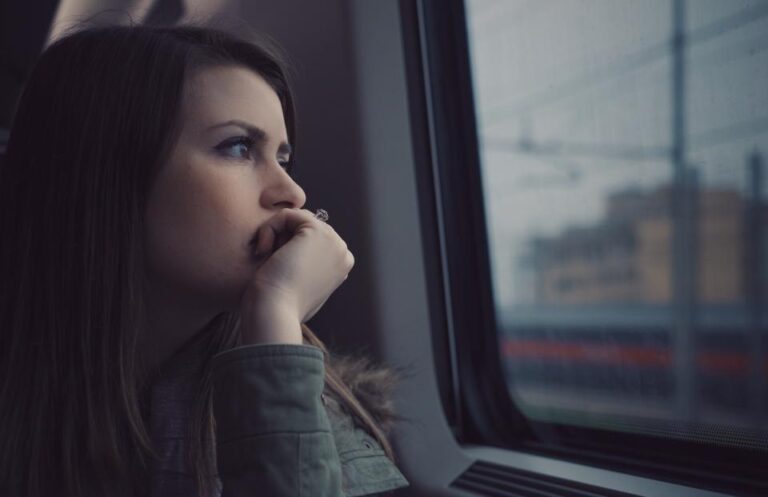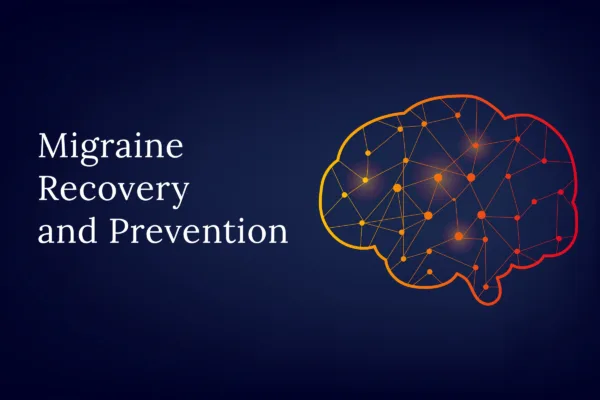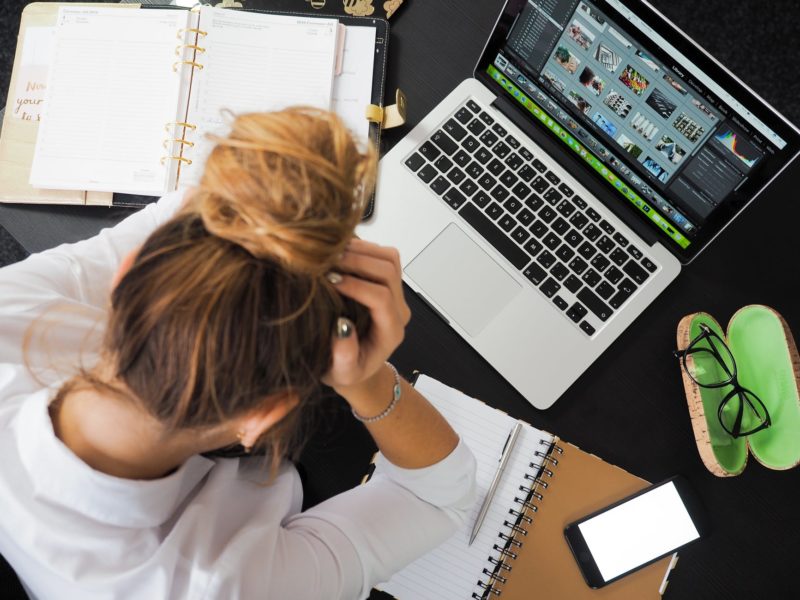Headache is a type of pain which occurs in the head or upper neck, and around 50% of adults will experience a headache at least once a year. According to World Health Organization, headache disorders are some of the most common disorders of the nervous system.
Headaches are typically classified into three broad categories: primary headaches, secondary headaches and cranial neuralgias, facial pain, and other headaches.
Primary headaches are a type of headache that can cause significant pain but are typically benign, meaning that they do not arise from an underlying cause or structural problems. Secondary headaches are a type of headache caused by an underlying cause, such as brain or head injury, infection or vascular disorders.
Here are some of the most frequently occurring types of headaches:
1. Tension-type headache

Tension headaches are the most common type of primary headache. This type of headache is characterized by radiating pain from the lower back of the head, including the neck, eyes and other groups of muscles, and typically affects both sides of the head.
Tension headache is typically felt as constant pressure or tightness being felt on both sides of the head.
Up to 20% of the population are affected by tension headache
Tension-type headaches can be caused by several different factors, including stress, muscoskeletal problems, poor posture, lack of sleep, and eyestrain.
The common treatment for tension headaches is typically over-the-counter medications, including ibuprofen, acetaminophen and aspirin. Alternative treatments for tension headaches include acupuncture, nerve blocks trigger points treatment and spinal manipulation.
2. Migraine
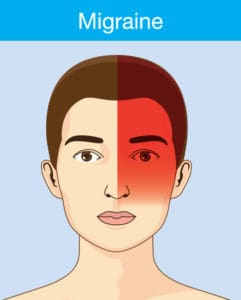
Migraines are a type of primary headache involving recurring headaches of moderate to severe intensity and that last anywhere from several hours and up to three days.
Migraines typically occur on one side of the head, and are often felt as pulsating pain, and are accompanied by nausea, vomiting, increased sensitivity to light and smells, or by visual disturbances referred to as “aura.”
The onset of migraine headaches typically occur at puberty and most commonly affects individuals aged 35 to 45 years. Migraines occur twice as often in women compared to men due to hormonal influences. In addition, several types of migraines have been identified to have genetic causes.
Most migraines are believed to be caused by a mix of genetic and environmental factors. Some of the most common migraine triggers include stress, lack of sleep, fatigue, hunger, weather changes and menstruation.
Treatment for migraines includes over-the-counter medications such as ibuprofen and acetaminophen. In addition, a number of preventive migraine medications exist, including topiramate and propranolol. Alternative therapies for migraines include acupuncture and spinal manipulation, nerve blocks, botox for migraine relief, and a number of medical devices, including neurostimulators and biofeedback devices, can help to reduce the recurrence of migraines.
3. Sinus headache
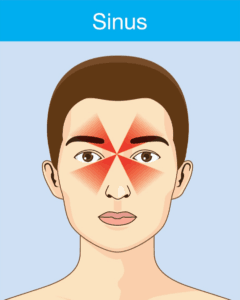
A sinus headache is a secondary type of headache and is often confused with a migraine. It typically feels like a deep and constant pain in the cheekbones, forehead and the bridge of the nose.
The sinuses are air-filled spaces behind the bridge of the hose, and inside the cheekbones and forehead, and can sometimes become inflamed and blocked due to an allergic reaction or an infection, causing the feelings of pain and tension, ultimately resulting in a sinus headache.
Sinus headaches symptoms are often accompanied by swelling of the face, the feeling of pressure inside the ears, and fever.
A physical exam by a qualified medical practitioner is needed to distinguish a sinus headache from a migraine. Since some migraines can also cause sinus symptoms. Over-the-counter decongestants, antihistamines or antibiotics (if a sinus infection is present) can treat common sinus headaches.
4. Cluster headache

Cluster headaches are a primary headache disorder and are one of the most painful types of headache. Cluster headaches arise due to a neurological disorder, and manifest as headaches that are severe in intensity and which occur on one side of the head, and typically around the eye.
Cluster headaches are characterized by brief (lasting from 15 minutes to up to several hours) and frequently recurring headaches (every day, or sometimes even several times a day), lasting for weeks or even months.
Symptoms caused by cluster headaches are often accompanied by nasal congestion, eye-watering, and swelling around the eye. Cluster headaches affect men more often than women, and the onset typically occurs after the age of 20 years.
The exact causes of cluster headaches are not currently known, but it is thought that the brain region called hypothalamus and the trigeminal facial nerve are both involved. Cluster headaches are sometimes triggered by tobacco smoke, alcohol and strong smells.
This type of headache needs to be diagnosed by a health practitioner, and is often mistaken for migraines or sinusitis. Treatments for cluster headache attaches include medications called triptans, and lidocaine in the form of nasal spray. Corticosteroids can sometimes be prescribed as a preventive treatment.
5. Medication-overuse headache
Medication-overuse headaches are a type of secondary headache which occur due to overuse of medications such as painkillers, increasing of headache severity.
The prevalence of a medication-overuse headache is high worldwide, and it usually presents for a long time before it is diagnosed and treated. This type of headache often occurs in individuals already suffering from a headache disorder, such as migraines or tension-type headaches.
Medication-overuse headaches are caused by excessive intake of medications such as triptans, analgesics, opioids, and ergotamines. Medication-overuse headaches are sometimes referred to as “rebound headaches.” Although the underlying mechanism causing this type of headache is still unknown, it seems that headache medication overuse triggers the transformation of headache episodes into chronic, daily headache.
Medication-overuse headache occurs more frequently in women than in men, and is typically increased in severity upon awakening.
In order to prevent the occurrence of medication-overuse headaches, individuals suffering from headache disorders are encouraged to take preventive medications such as Botox treatment for migraine, as opposed to large doses of painkillers at the headache onset.
Schedule a visit with your doctor if the number or severity of your headaches increase or if your medication no longer seems to provide relief.

